We don’t keep tropical fish just for bubbles or filter noise. We keep them because they are stunning. The colors, the movement, the variety—it’s like a living painting in your home.
But here’s the catch: your fish won’t stay dazzling without the right food. You can buy the fanciest tank and the best filter, but if your fish eat bland, poor-quality flakes, don’t expect them to shine.
I learned this the hard way. I once had a tank of neon tetras that went from glowing gems to looking dull. It wasn’t until I found color-enhancing fish food that they started to shine again.
So, if you’ve wondered why your tropical fish aren’t as vibrant as those in the pet store, you’re in the right place.
Let’s explore what makes color-enhancing food effective, what ingredients to seek, and which options can make your fish glow like underwater fireworks.
Why Fish Colors Fade in the First Place
Before we jump into food options, let’s face an annoying truth: fish don’t always keep their natural brilliance. Why?
- Poor diet: If they’re not getting enough pigments like carotenoids, their scales lose intensity.
- Stress: Cramped spaces, poor water quality, or aggressive tank mates can dull their colors.
- Age: Just like us, fish lose some vibrancy as they age.
- Lighting: A dim tank makes fish appear less colorful, even if they’re perfectly healthy.
But diet plays the biggest role. Ever noticed how some fish look extraordinary at the pet store, but after a month at home, they look… meh?
That’s usually because the pet store feeds them specialized, nutrient-packed food designed to keep them bright for sale. Once you switch to basic flakes, the glow disappears.
What Makes Color-Enhancing Fish Food Special?
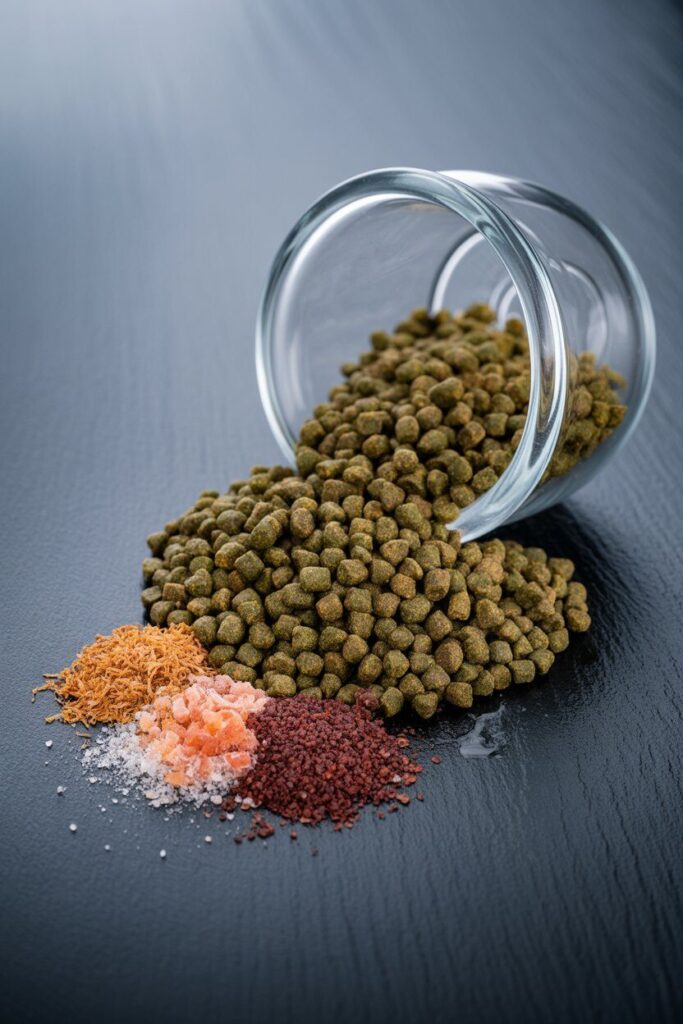
Color-enhancing fish food isn’t just a gimmick. It’s loaded with natural pigments, antioxidants, and nutrients that amplify the reds, blues, and yellows in your fish.
Think of it like fish makeup—except it’s natural, healthy, and works from the inside out.
Here are the superstar ingredients you’ll find in the best options:
- Astaxanthin: A powerful carotenoid that brings out deep reds and oranges. Found naturally in krill and shrimp.
- Spirulina: A blue-green algae that boosts greens and blues while improving immune health.
- Beta-carotene: Commonly found in carrots and marigolds, it enhances yellows and golds.
- Krill meal: Packed with protein and color-boosting pigments.
- Omega-3 fatty acids: Help with overall health, making fish look more vibrant.
The goal isn’t just to add color but to support health and vitality. After all, a sick fish won’t glow no matter what you feed it.
The Best Types of Color-Enhancing Fish Food
1. Flakes
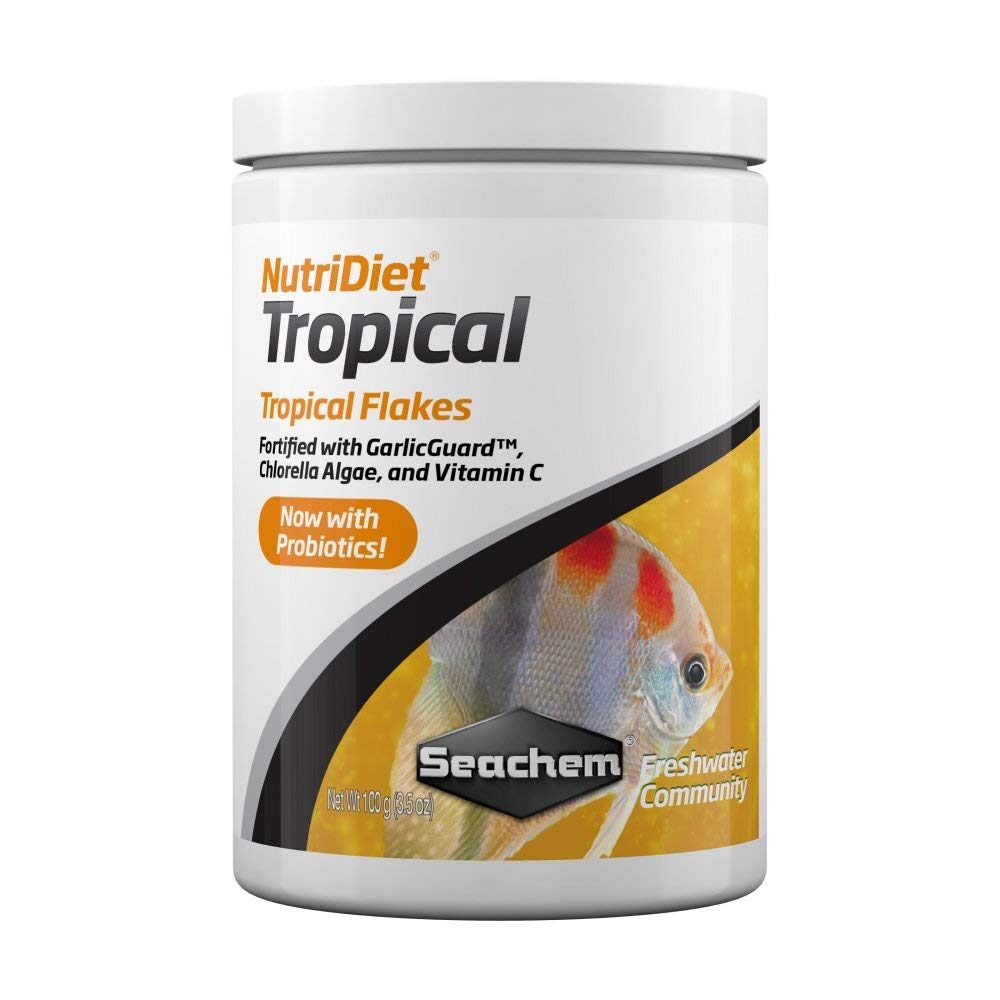
Flakes are the old-school choice, and let’s be real, every fish owner has used them. They float on the surface, making them ideal for fish that feed at the top.
Some brands pack in spirulina or shrimp meal, which is perfect for tropical fish.
Pros: Easy to feed, affordable, widely available.
Cons: Nutrients degrade quickly once the flakes hit water.
2. Pellets
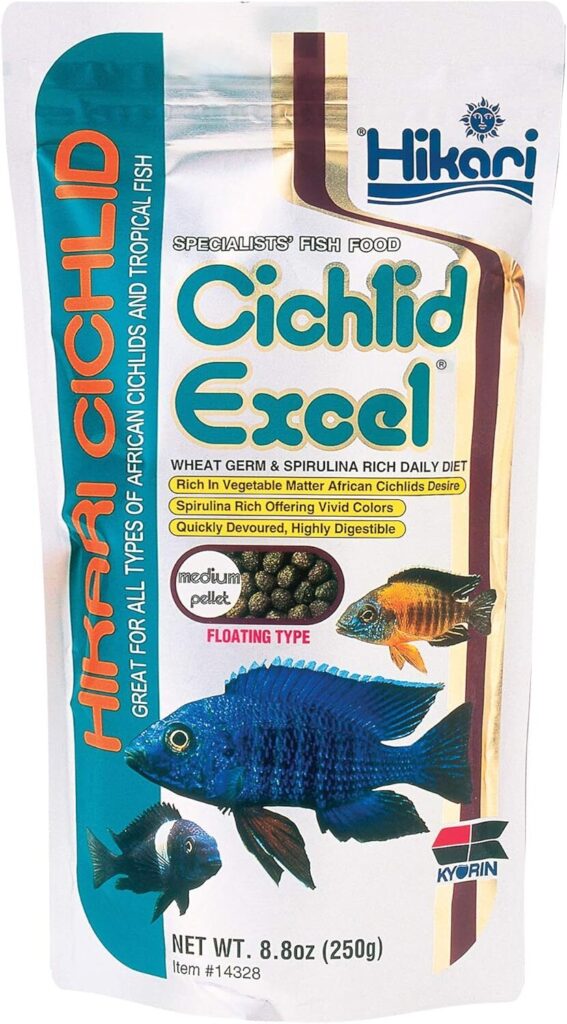
Pellets are the go-to for serious hobbyists. They come in floating, sinking, or slow-sinking varieties, which means you can target fish at different tank levels.
Pros: More nutrient-dense than flakes, less messy.
Cons: Some fish need time to adjust to eating pellets.
3. Freeze-Dried Foods
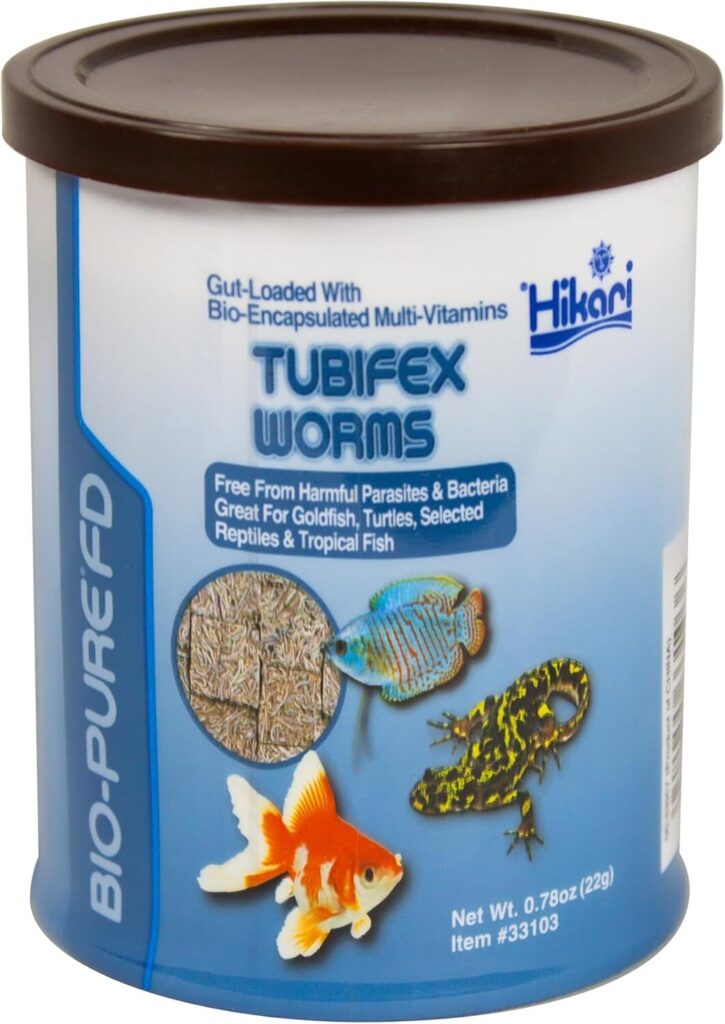
Freeze-dried krill, bloodworms, or daphnia? Yes, please. These treats pack serious pigment-boosting power.
Pros: Super effective for enhancing reds and oranges.
Cons: Not a complete diet on their own; best as a supplement.
4. Frozen and Live Foods
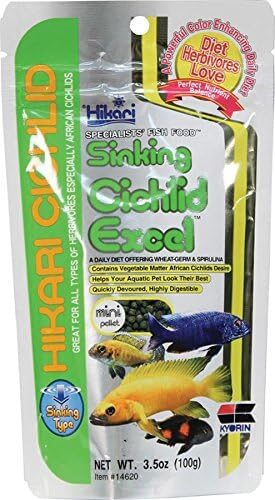
Nothing beats the natural goodness of frozen or live foods like brine shrimp or krill. Fish go nuts for them, and the color payoff is massive.
Pros: High in nutrients, great for picky eaters.
Cons: Less convenient, needs freezer space, and can get pricey.
My Personal Favorites
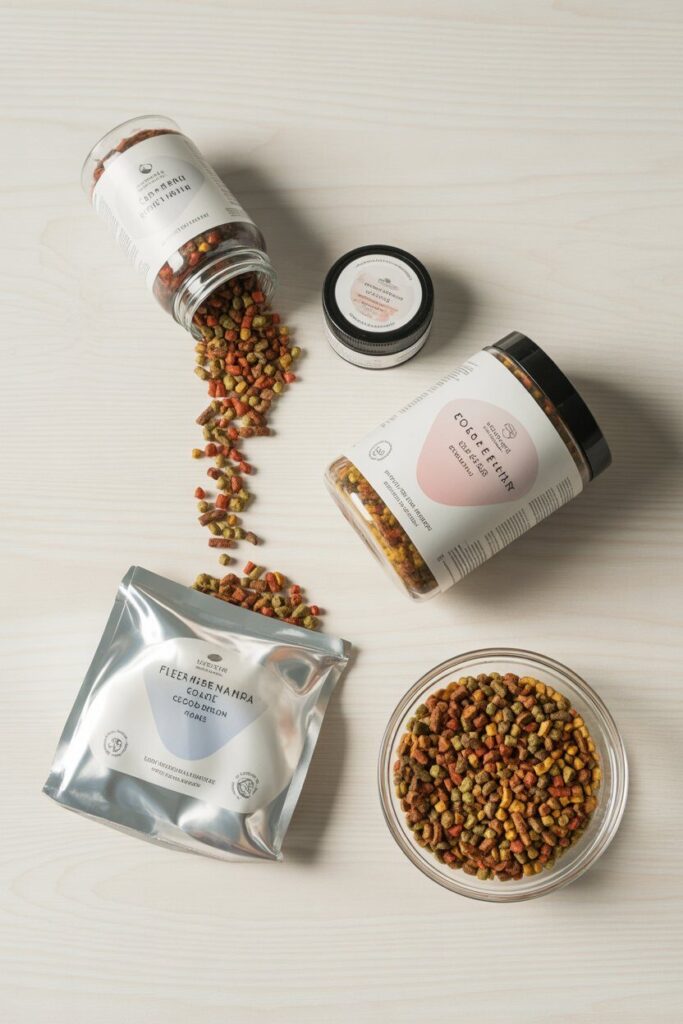
Now, IMO, the best approach is variety. Just like you wouldn’t want to eat the same sandwich every day, your fish deserve some diversity.
I’ve had the best results mixing high-quality pellets with occasional frozen krill or bloodworms.
When I switched my angelfish from generic flakes to a pellet brand rich in astaxanthin, their stripes darkened within weeks.
My neon tetras? They practically glow under the tank light after a spirulina boost. And trust me, once you see the difference, you’ll never go back.
Tips for Choosing the Right Food
Buying fish food can feel like standing in the cereal aisle at the grocery store—so many options, all claiming to be the best. Here’s how I cut through the noise:
- Check the ingredients first: If you see fish meal as the main ingredient, you’re on the right track. Avoid foods packed with fillers like wheat or soy.
- Look for carotenoids: Astaxanthin, spirulina, and beta-carotene should be near the top of the list.
- Match the food to your fish: Surface feeders like guppies love flakes. Mid-level feeders like tetras do well with pellets. Bottom dwellers like cory cats need sinking options.
- Don’t overdo it: Too much protein can lead to water quality issues, and overfeeding just makes your tank a swamp.
Ever fed your fish and watched them ignore half the food? That’s your sign to switch it up.
Feeding Strategies That Maximize Color
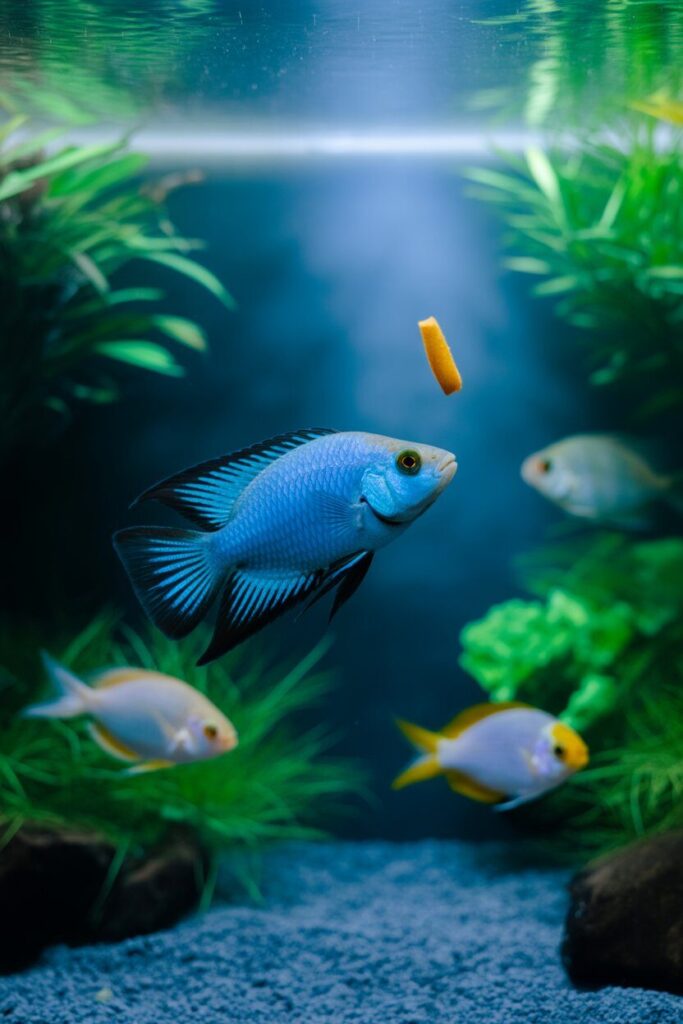
Even the best food won’t work if you feed it wrong. Here’s what I’ve learned:
- Feed small amounts twice a day: Fish can’t handle big meals. Small, consistent feedings keep them healthier.
- Rotate foods: Mix pellets, flakes, and treats for the best results.
- Supplement wisely: Add freeze-dried or frozen foods 2–3 times per week for an extra punch of color.
- Keep the tank clean: Uneaten food leads to poor water quality, which stresses fish and dulls their colors.
Think of it this way: good food + clean tank = happy, glowing fish.
Common Myths About Color-Enhancing Food
Let’s bust a few myths that float around forums:
- “It’s just artificial coloring.” Nope. The best products use natural pigments like spirulina and krill.
- “Color-enhancing food makes fish unhealthy.” Not true if you use balanced, high-quality brands. In fact, these foods often improve immunity.
- “All fish foods are basically the same.” Sorry, but that’s like saying fast food burgers and home-cooked meals are the same thing. Big difference.
Why It’s Worth the Investment
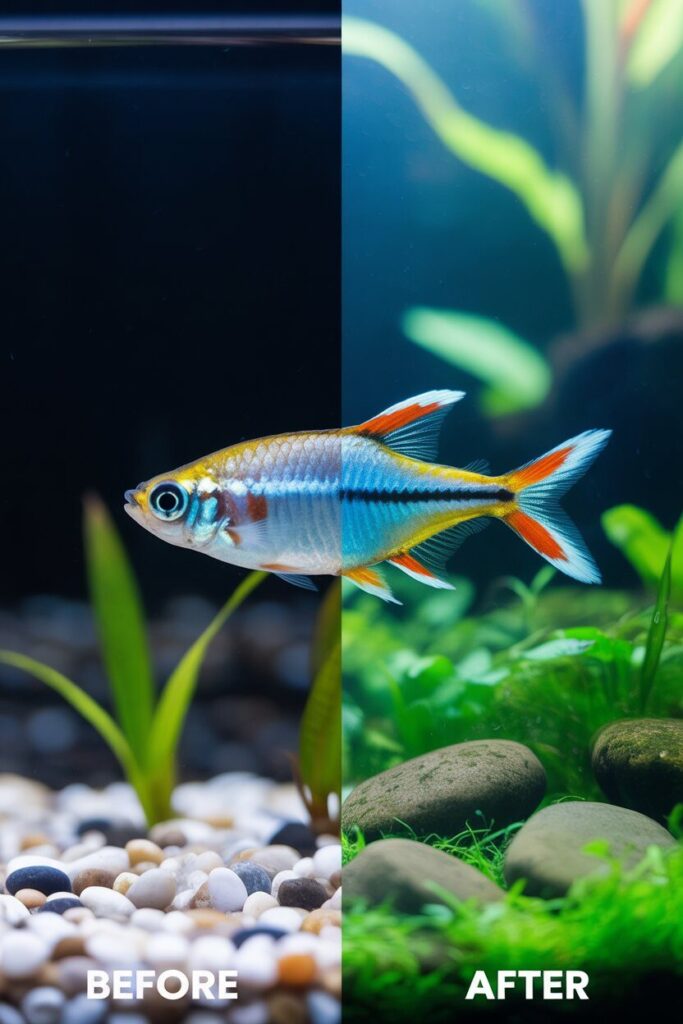
Some hobbyists think color-enhancing foods are overpriced. But let’s be real: you probably spent a good chunk on your tank, filter, and decorations. Why skimp on the one thing your fish actually eat?
Spending a few extra bucks on quality food doesn’t just boost color. It promotes growth, strengthens immunity, and reduces stress.
In the long run, it means fewer sick fish and fewer expensive vet visits. Plus, when your friends come over and marvel at your tank, you’ll know it was worth every penny.
Final Thoughts
Your tropical fish can either look average or they can look breathtaking. The difference often comes down to food.
By choosing color-enhancing fish food packed with astaxanthin, spirulina, and krill, you give your fish the chance to shine like they were meant to.
I’ll be honest: once I saw how much brighter and healthier my fish looked after switching foods, I became a little obsessed.
Now I experiment, rotate diets, and treat feeding time like a mini science project. And every time I see my tank sparkle, I know I made the right choice.
So, are you ready to make your tropical fish shine? Next time you’re staring at that wall of fish food at the store, skip the cheap stuff and grab the good kind.
Trust me, your fish will thank you—with colors so bright you’ll wonder if they’re showing off.
What Makes Color-Enhancing Fish Food Different?
Color-enhancing fish food has natural pigments like astaxanthin, spirulina, and krill meal. These ingredients boost the reds, blues, and yellows in tropical fish.
Unlike regular flakes, this food highlights colors while also improving health and immunity. A standard diet may keep your fish alive, but color-focused foods help them shine.
You’ll see the difference in just a few weeks. Fish that eat these ingredients have more vibrant scales and keep their natural beauty longer.
If you want your tank to look like a living rainbow, color-enhancing food is the best choice.
Can All Tropical Fish Eat Color-Enhancing Food?
Yes, most tropical fish can safely eat color-enhancing food. Guppies, tetras, angelfish, and cichlids all benefit from these pigments.
Just make sure to choose the right type of food—flakes, pellets, or sinking varieties—for your fish’s feeding habits.
For instance, surface feeders prefer flakes, while bottom dwellers need sinking pellets. Always check the label to ensure the food matches your fish species and tank setup.
How Long Does It Take to See Results?
You’ll usually notice color improvements within two to four weeks of regular feeding. The timing depends on your fish’s species, health, and environment.
Good food, clean water, and proper lighting enhance these color changes. It’s like a complete care package: nutrition plus environment leads to glowing, vibrant fish.
Is Color-Enhancing Fish Food Healthy for Long-Term Use?
Absolutely. High-quality color-enhancing foods boost not just appearance but also overall health, immunity, and energy.
Ingredients like spirulina and omega-3 fatty acids help strengthen immune systems and allow fish to resist stress.
Choose trusted brands that avoid fillers like soy or wheat. Focus on foods with fish meal, krill, and carotenoids as main ingredients. This will help your fish thrive in the long run.
Should I Mix Color-Enhancing Food With Other Fish Foods?
Yes, mixing different food types gives the best results. A varied diet ensures your fish get all the nutrients they need and boosts their color. For example, combine high-quality pellets with frozen krill or bloodworms.
Rotating foods keeps your fish excited at feeding time and prevents nutritional gaps. Just remember to feed small amounts twice daily. This avoids overfeeding and poor water quality.
